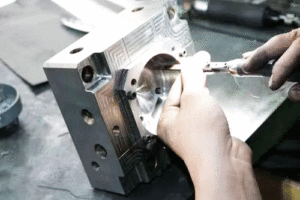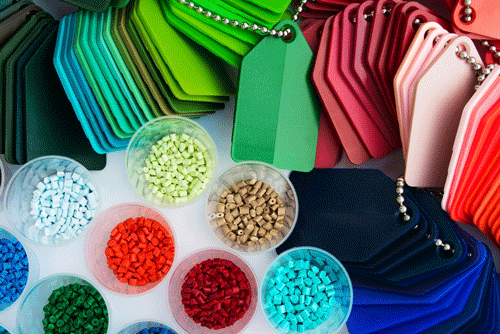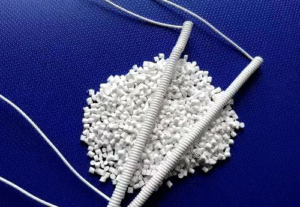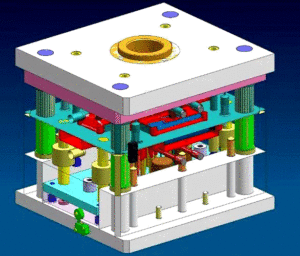
Polishing Treatment for Plastic Molds
Polishing Treatment for Plastic Molds With the widespread application of plastic products, such as daily-use items and beverage packaging containers, there is often a requirement
Plastic is a polymer compound that is polymerized by addition polymerization or polycondensation reaction with monomer as raw material. It is commonly known as plastic or resin. The composition and shape can be changed freely. It is composed of synthetic resin and fillers, plasticizers, stabilizers, and lubricants pigment and other additives. The main component of plastic is resin. The resin accounts for about 40% to 100% of the total weight of the plastic. The basic properties of plastics are mainly determined by the nature of the resin, but additives also play an important role. Some plastics are basically composed of synthetic resins, with no or little additives, such as plexiglass and polystyrene.
Polyethylene is the most productive in the plastics industry. Polyethylene is a thermoplastic resin made by polymerizing ethylene. In industry, it also includes copolymers of ethylene and a small amount of α-olefins. Polyethylene is odorless, non-toxic, feels like wax. Besides, it has excellent low temperature resistance (the lowest temperature can reach -100~-70°C) and good chemical stability. Also, it can withstand most acids and alkalis (not resistant to the acid with oxidation properties). It is insoluble in general solvents at room temperature. And it has low water absorption and excellent electrical insulation. Polyethylene is generally used in plastic wrap, vest-type plastic bags, plastic food bags, milk bottles, pails, water bottles, etc.
Polypropylene is a kind of thermoplastic resin made by polymerization of propylene. Polypropylene is a non-toxic, odorless, and tasteless milky white highly crystalline polymer with a density of only 0.90-0.91g/cm3. It is currently one of the lightest varieties of all plastics. It is particularly stable to water, with a water absorption rate of only 0.01% and a molecular weight of about 80,000 to 150,000. It has a good moldability. However, for its large shrinkage rate (1%~2.5%), thick-walled products are easy to dent. For some parts with high dimensional accuracy, it is difficult to meet the requirements that the surface of the products has good gloss. Polypropylene is generally applied in microwave tableware, basins, plastic barrels, thermos flask shells, woven bags, etc.
Polyvinyl chloride is a polymer formed by the polymerization of vinyl chloride monomer in peroxides, azo compounds and other initiators. Or under the action of light and heat, it is polymerized according to the free radical polymerization reaction mechanism. In actual use, PVC materials is often added with stabilizers, lubricants, auxiliary processing agents, pigments, impact resistance agents and other additives. It has the properties of non-flammability, high strength, weather resistance and excellent geometric stability. Polyvinyl chloride is generally used to make plastic wrap, plastic shoes, leather products, films, cables, and plastic bags.
Attention: When PVC is made into soft plastics such as cling film and plastic bags, a large amount of auxiliary materials must be added. Some of them are toxic. The harmful substances in this material may cause cancer after being released.
Polystyrene is a polymer synthesized by the radical addition polymerization of styrene monomer. It is a colorless and transparent thermoplastic with a glass transition temperature higher than 100°C. So it is often used to make various disposable containers that need to withstand the temperature of boiling water and disposable foam lunch boxes. In addition, polystyrene is also applied in combs, boxes, ballpoint pen holders, children’s toys, plastic shopping bags, etc.
Attention: Heavy metals and other banned additives are used in the production of disposable tableware. And that will dissolve with the water, vinegar, and oil contained in the food. Then, it enters the human body, which may cause indigestion, local pain, liver system disease and other diseases.
ABS is acrylonitrile-butadiene-styrene copolymer. ABS is a kind of thermoplastic polymer material with the properties of high strength, good toughness and easy processing and forming. ABS resin is a terpolymer of acrylonitrile, 1,3-butadiene and styrene. It is normal under the environment of -25℃~60℃, and has good formability. The processed products have smooth surface. And it’s easy to dye and electroplating. Besides, it can be compounded with a variety of resins. ABS is mainly used for alloys, plastics, and ABS grades.


Polishing Treatment for Plastic Molds With the widespread application of plastic products, such as daily-use items and beverage packaging containers, there is often a requirement

Injection Molding Techniques for TPE and TPR Injection Molding Techniques for TPE and TPR 1. Dry the TPE and TPR material before injection molding It

Winter Maintenance Measures for Injection Molding Machines As winter approaches and temperatures gradually drop, a cold chill envelops the earth. While ensuring personal warmth, it

Assessment Regulations for Mold Trial Exceeding 3 Times Assessment Regulations for Mold Trial 1. Purpose The purpose of this regulation is to standardize the work of